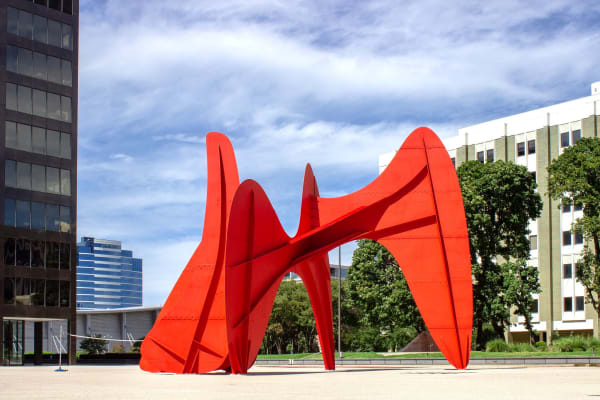Looking at Calder's Early Years
Art critic, Jed Perl, has written the first biography of one of America's most beloved artists. Calder: The Conquest of Time: The Early Years: 1898-1940, looks at the progression of Calder's life and work, from his childhood creations to his work as an engineer to painter, jewelry maker and innovative sculptor.
Calder was born in Philadelphia in 1898. Both his grandfather and father, A. Stirling Calder, were successful sculptors, who created large-scale public works. His mother, Nanette Lederer Calder, was an accomplished painter. Calder created small sculptures as a child, and studied engineering before deciding to pursue a career as an artist.
The book, which is over 600 pages, has many insights into Calder's life as a radical artist, devoted husband and father and a genius, whose designs influenced artists, architects and engineers.
"Calder became an abstract artist and a married man," Perl wrote. "These were the two most important decisions he ever made, the foundations on which he would build for the rest of his life." Some of the most interesting aspects of the book are the accounts of Calder's radical ideas, both in his work and personal life. Perl writes about Calder's, and his wife, Louisa's, role in helping European émigrés escaping the Nazis. One of the refugees they helped, and befriended, was Saul Steinberg, a Romanian-Jewish refugee who went on to become one of the most celebrated cartoonists for the New Yorker.
Calder: The Conquest of Time is the first of two volumes commissioned by the Calder Foundation and published by Yale University Press. Volume two, Calder: the Conquest of Space is due to be published in 2019.
The Legacy of La Grande Vitesse
In 1969, Alexander Calder's sculpture La Grande Vitesse (meaning The Great Swiftness) became the first civic sculpture to be jointly financed with both federal and private funding. Since the success of La Grande Vitesse, such public work projects have become almost commonplace, with the NEA funding hundreds of other works around the country.
La Grande Vitesse, which is 54 feet long, 43 feet high and 30 feet wide, was designed by Calder for the public square, now called Calder Square, in downtown Grand Rapids, Michigan. The sculpture revitalized the downtown area and plans are currently in the works to redo and revitalize the entire square.
The city has been holding an Art Festival in the square every summer since 1970. Much of the revitalization of the area is being done in preparation for the 50th anniversary celebration of La Grande Vitesse in 2019. La Grande Vitesse got a new coat of paint this summer.
The Work of Alexander Calder at Surovek Gallery
Alexander Calder created Enmeshed Jewel in 1969, the same year that La Grande Vitesse was erected in Grand Rapids. Please contact us for more information about Enmeshed Jewel or any of the other fine works available in the Surovek Gallery.



